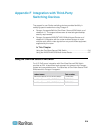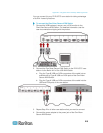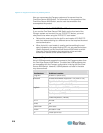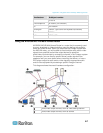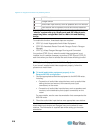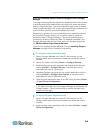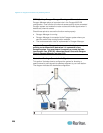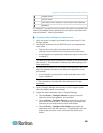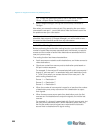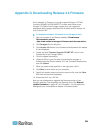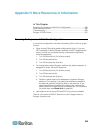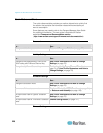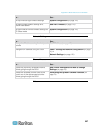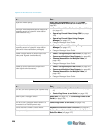
Appendix F: Integration with Third-Party Switching Devices
222
Tip: To keep the association data for use in the future, choose
Router > Export Router Configuration to export the data.
6. Keep Paragon Manager running and continuously connected to
Paragon.
Now when you access the channel port 8 by operating the user station
connected to user port 1, you will be able to hear the server's sound via
the speakers near your user station.
Tip: If you install a set of speakers around each user station, and
associate them properly in Paragon Manager, you will be able to hear
the sound of the channel-8 server from any user station.
Audio/Video Routing Characteristics
Before performing the audio/video routing function, you should check the
number of audio/video sources associated with the channel you want to
access and the number of audio/video destinations associated with the
user port you are using.
The routing function has these characteristics:
Audio sources are routed to audio destinations, and video sources to
video destinations.
Signals are routed from source ports to destination ports based on
the port number sequence.
For example, if channel port 8 is associated with audio source ports 1
through 3, and user port 1 is associated with audio destination ports
4, 7 and 9, then when you access channel 8 from user port 1, the
audio routing directions are:
Source 1 --> Destination 4
Source 2 --> Destination 7
Source 3 --> Destination 9
When the number of source ports is equal to or less than the number
of destination ports, every source can find a destination to output
their signals.
When there are more source ports than destination ports, the first
sources can find destinations to output the signals, but not the last
sources.
For example, if a channel is associated with 3 audio source ports, but
the user port is associated with 2 audio destination ports, then only
the first two audio sources' signals are routed and the last audio
source finds no destinations for signal routing.



